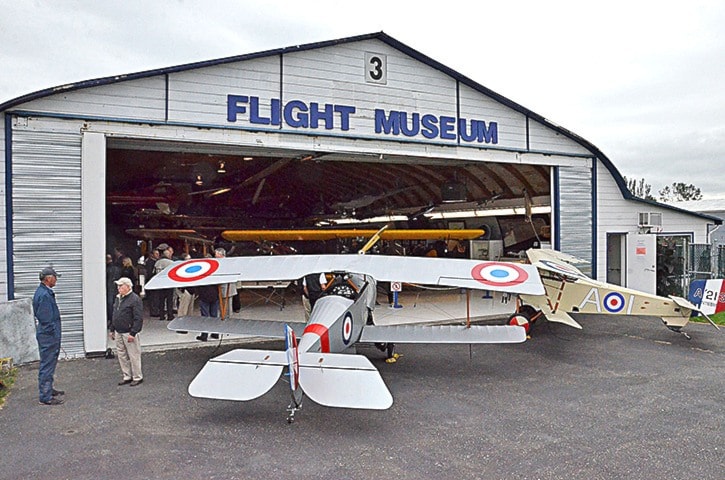By this time next year, First World War-style aircraft could be buzzing through the skies over Langley on a regular basis.
The Sopwith Pup – a biplane that once took on German Fokkers in the skies over Flanders – are being assembled in Missouri now by a quartet of volunteers from Langley’s Canadian Museum of Flight.
When they’re completed, they will fly over Europe again, to commemorate the 100th anniversary of the Battle of Vimy Ridge.
The re-creation of the two Sopwiths is part of a project called A Nation Soars, which has partnership from the federal government and a local flying group called Escadrille Northwest.
Peter Thornton and Allan Snowie, two pilots with the Escadrille, brought a pair of 7/8ths scale replica Nieuport 11s to the museum on Friday to publicly kick off the project.
It was Snowie who was one of the driving forces behind the project, said Thornton.
“We’ve always wanted to go fly across Vimy,” Thornton said. “We’re all ex-Air Force.”
Once the idea of building more replica aircraft for the fly past was in place, along with some sponsorship, the chance to actually build the craft was offered to two air museums – Langley’s, and one in Brampton, Ont.
When Brampton’s museum had to pull out for lack of space, Langley agreed to build both of them.
Four museum volunteers are literally putting the aircraft frames together this week.
“It’s basically a very large model aircraft kit,” said Mike Sattler, the museum’s general manager.
The model-kit builders will be Ray Fessenden, Alasdair MacDonald, Sam Beljanski, and Steve Chamberlain, all men with significant experience with aircraft maintenance work.
Fessenden said the new replicas will be significantly stronger than the actual planes that flew above the Western Front from 1914 to 1918.
The original Sopwiths, as with most early aircraft, were simple wooden frames covered with fabric skins. They had simple rotary engines, in which most of the engine itself rotates along with the propeller.
Fessenden said the new Sopwiths will be made of metal fames, with welded steel tubing for the fuselage and metal spars in the wings. The exterior will be a synthetic fabric considerably stronger than the highly flammable doped fabric that was used during the war. The engines will be modern ones modified to provide a cruise speed similar to that of the Pups – about 81 miles per hour.

Once the wings and fuselage frames are assembled, the team will truck them back to Langley, where the airport management has set aside a hanger for the remainder of the assembly work. The team will install the engines and put on the fabric, and expects to have the first aircraft airworthy by next April, the second by September.
“Once we start something, we’ve got to see it right to the end,” said Beljanski.
The museum volunteers are excited to get going on the project, said Dave Arnold, vice president of the museum’s board and head of the project.
“It’s a big undertaking, but it’s really exciting,” he said.
Eventually, as well as the flyover, three short films are expected to be created about the project. Both Sopwith Pups will remain with the museum after they are finished.
